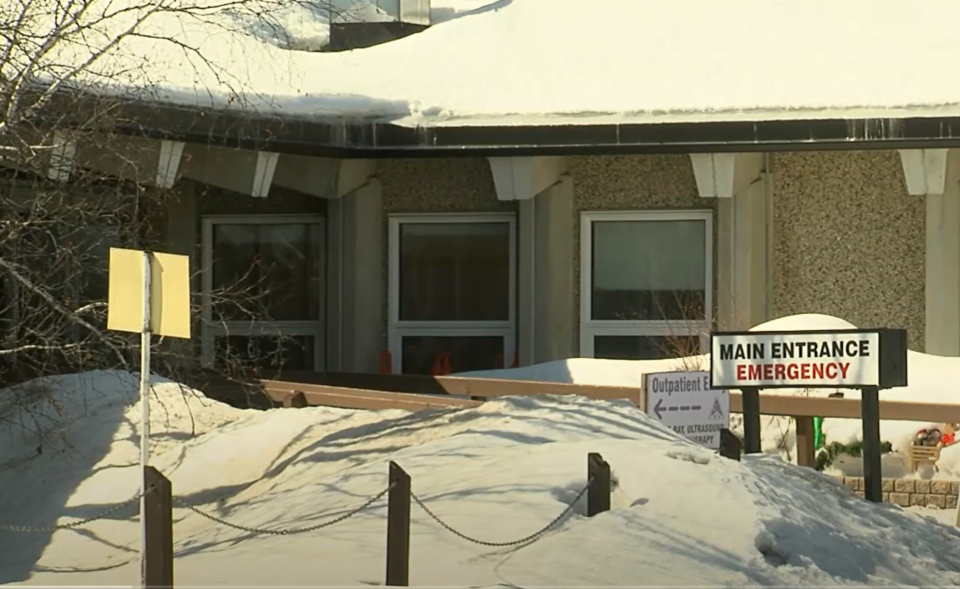RED LAKE – Last month, the alarm bells sounded across the north as Margaret Cochenour Memorial Hospital almost faced closing its emergency department.
At the last minute, a locum from the south signed on to cover the ER shifts.
Although the hospital staff felt momentarily relieved, securing the physician was only a band-aid on top of a larger issue.
The rest of the month still had too many scheduled shifts to fill and not enough physicians to fill them.
To fill those shifts senior hospital staff had to get creative by shifting primary care health care workers to emergency care, shifting around staff hours to meet the demand, and working extra long hours to ensure the emergency department stayed open.
Sue LeBeau President and CEO of Red Lake Margaret Cochenour Memorial Hospital, “It was a lot of collaboration and teamwork between our regional chiefs of staff, Health Force Ontario and our local physicians and family health teams. They pulled out all the stops, called their friends, called the folks that they know, and managed to find some physicians that were willing to come and cover our emergency department for July.”
Although LeBeau is grateful to her staff and the help from the regional health care group across the north, there is exhaustion in her voice as she confirms that the whole ordeal was a “stretch.”
“A couple of physicians who did 36 hours stretches which is not easy,” admits LeBeau, “because volumes are up significantly this year.
According to LeBeau, Red Lakes emergency department visits are up about 10% since pre-pandemic levels.
“It feels like more, probably because of the work involved in providing care in a pandemic situation,” said LeBeau.
In 2019-20, Red Lake recorded 4804 ED visits. In 2020-21 that number when up to reach 5027 ED visits. This year, the Red Lake hospital had 5289 ED visits. That is a total of 485 visitors to the hospital in a little over two years.
“And we have some kind physicians who have stayed as kind of a backup to those physicians during those shifts. It was really a lot of pulling together, a lot of stretching, and not easy to do. We achieved it. Not sustainable though. This is not something they’ll be able to do day in day out, month in month out,” said LeBeau.”
At an unrelated press conference in Stratford, Premier Ford calls on the Federal government for support.
“It's not sustainable that the federal government is giving us 22 per cent. We're paying 78 per cent. And that's across the country. Unacceptable,” said Ford.
However, earlier this year, the Financial Accountability Office of Ontario’s annual report found that the Ontario government saved $1.8 health in health care. Those savings went to Ontario’s net debt which is projected to be around $400 billion.
Health Minister Sylvia Jones has been quite silent on the health care crisis.
NDP Health Critic France Gélinas find Jones silences unacceptable.
If Jones doesn’t find this mess to be unacceptable, how bad is she prepared to let our health care system get?” asked Gélinas. “Seriously sick patients are being moved. Long waits and hallway medicine are rampant. And some people will rush to ER only to find the doors locked.”
Even the Ontario Liberals are calling out Jones for her lack of enthusiasm during this crisis.
“There is no excuse for this government’s inaction,” said Dr. Adil Shamji, MPP for Don Valley East. “As the Premier and Minister of Health, they should be standing front and center to fix this ongoing crisis, yet Doug Ford and Sylvia Jones are consistently nowhere to be found. By repeatedly ignoring the needs of our healthcare system and not valuing our healthcare workers, their neglect is compromising care for patients across Ontario,” added Dr. Shamji.
Nevertheless, there is no headway in solving the staffing shortage issue.
Therefore, Red Lake will still need to find creative ways to maintain its emergency department for Aug.
“Yes, Aug. is challenging,” said LeBeau. “So, there are times when we only have two physicians in the community. Especially towards the end of Aug. So, we are still working very hard on recruiting locums and filling our full-time physician’s timeline. Because we can’t expect two physicians to manage a whole community with a very busy emerg as well as primary care.”
LeBeau also adds that primary care is suffering due to all the staff resources that are being diverted to the emergency department.
“We’re decimating primary care to protect emergency services, but in the long run we are going to create more challenges in the emergency section because we are removing access to preventive care and to early care for patients.”
As the north call for help, it seems that the crisis is going to get worse before it gets better.
